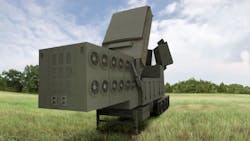Orolia chosen to provide positioning, navigation, and timing (PNT) for hypersonic missile-defense radar
ANDOVER, Mass. – Missile-defense radar experts at Raytheon Technologies Corp. needed a rugged time and frequency system to supply positioning, navigation, and timing (PNT) capability to the U.S. Lower Tier Air and Missile Defense Sensor (LTAMDS) radar program. They found their solution from Orolia USA in Rochester, N.Y.
Officials of the Raytheon Missiles & Defense segment in Andover, Mass., have selected the Orolia Government Systems business to supply a low size, weight, and power consumption (SWaP) time and frequency system for LTAMDS.
Raytheon won a U.S. Army contract in October 2019 to provide the next-generation LTAMDS advanced air and missile defense radar to help defeat advanced missile threats such as hypersonic weapons.
Raytheon chose Orolia based on the company's expertise in resilient timing and configurable ruggedized PNT systems for challenging environments.
Related: Three companies set sights on precision navigation that works independently of GPS
LTAMDS is the next generation, 360-degree missile-defense radar that ultimately will replace the current U.S. Army's Patriot missile radars. The radar has gallium nitride components,and is scheduled to reach initial operational capability with the Army in 2022.
"Ultra-precise mission timing and sync technology are fundamental building blocks for the Resilient PNT systems that warfighters rely on for continuous operations in contested environments," says Hironori Sasaki, President of Orolia Defense & Security.
Orolia’s SecureSync is designed to synchronize critical military and commercial operations where failure is not an option, Orolia officials say.
The system combines precision master clock technology with configurability, and offers high reliability, security, redundancy, and flexibility in a rugged, modular, cost effective form factor.
SecureSync synchronizes to satellite navigation systems like GPS, Galileo, and other GNSS constellations, can add alternative signals to GPS/GNSS input references to improve resilience; offers GPS signal jamming and spoofing detection; can generate time and frequency output signals; and offers internal oscillator options like low-phase noise.
Securesynch operates in temperatures from -20 to 65 degrees Celsius; offers secure network management and control; has a ruggedized shock and vibration-tested chassis.
For more information contact Orolia online at www.orolia.com, or Raytheon Missiles & Defense at www.raytheonmissilesanddefense.com.

